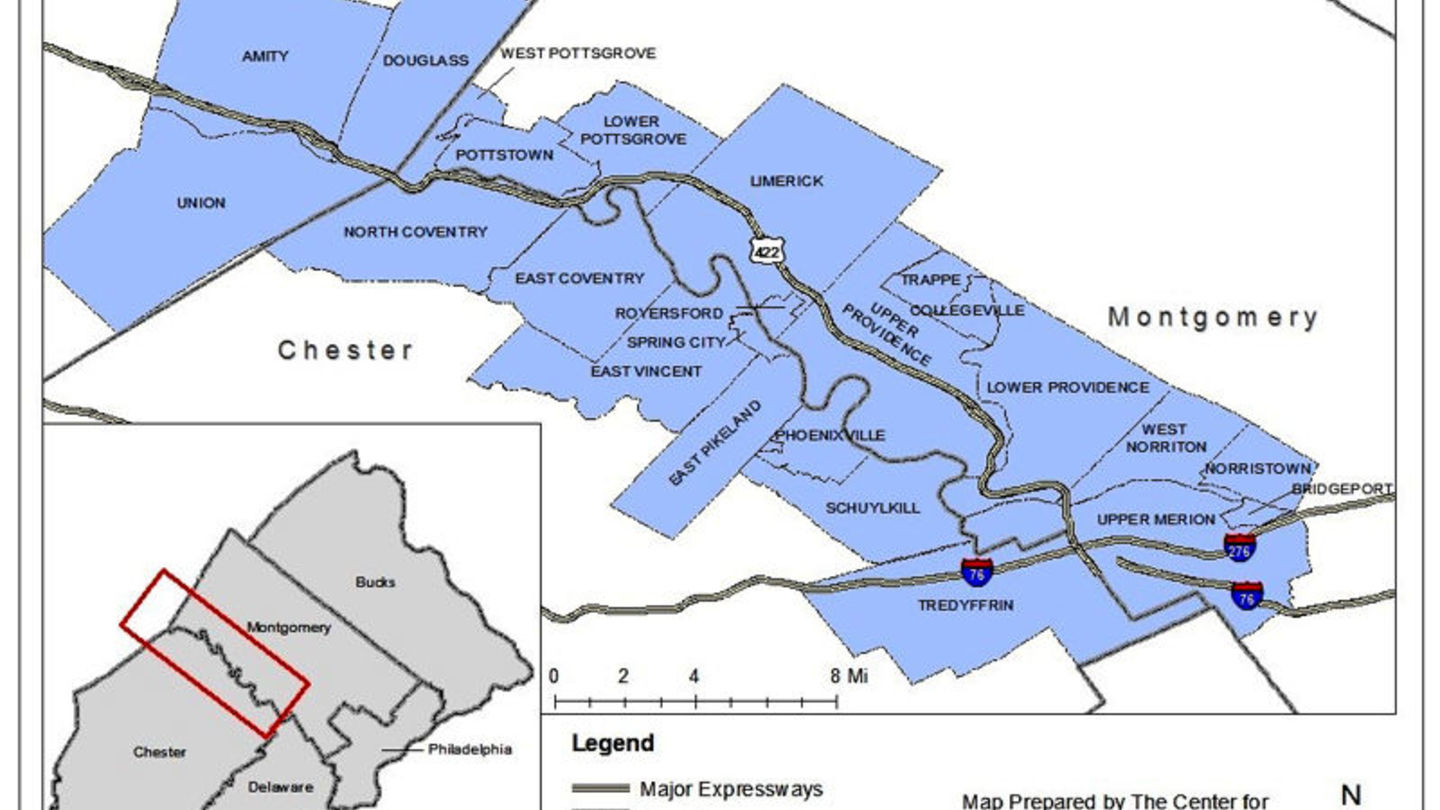
Anyone who has ever traveled along the U.S. Route 422 corridor with any frequency knows it's no easy stretch of road. Traffic congestion is a daily hurdle for commuters from King of Prussia to Pottstown to Reading.
Temple University's Center for Sustainable Communities is using a $200,000 grant to develop recommendations for effectively implementing "Transportation Demand Management" policies along the Route 422 corridor in Montgomery, Berks and Chester counties. The grant funding was made available through the Federal Highway Administration and was awarded to the Center by the Pennsylvania Department of Transportation.
"The Route 422 corridor has seen significant growth in population, industry and traffic congestion; King of Prussia in particular has substantial traffic concerns. This project is designed to adapt nationally acknowledged best practices in Transportation Demand Management (TDM) to the specific conditions that prevail in the communities along the corridor," said Dr. Bradley Flamm, a Research Fellow with the Center for Sustainable Communities and principal investigator for the PennDOT study. "Coordinated and comprehensive TDM is recognized for offering effective, low cost alternatives to address congestion and mobility issues."
The Route 422 study, Flamm said, is designed to "help PennDOT and regional and local governments respond to traffic congestion without having to expand existing roadway infrastructure."
"Most Pennsylvania counties and local governments don't have the resources to add lanes or highway facilities. They need to find ways to efficiently manage existing roads and highways," he said. "TDM is a system of strategies designed to encourage motorists to use other modes of transportation or reduce single occupancy driving, which in turn reduces traffic congestion and the environmental impacts of traffic in general. Our mandate it to identify ways in which TDM strategies may be applied along the Route 422 corridor given the legal, regional, political and economic contexts of the Commonwealth."
The Center for Sustainable Communities is the lead project participant in the study, partnering with the Greater Valley Forge Transportation Management Association (GVFTMA) and CFA, Inc., a private transportation and planning consulting firm — CFA principal Michael Carroll has taught courses in Temple's Community and Regional Planning program. Student research assistants from the undergraduate Community Development and graduate Community and Regional Planning programs are also supporting the project.
"We have completed the background analysis report of the Route 422 corridor region. We need to have an understanding the conditions that prevail at the local, regional and state levels to determine how effective TDM can be," Flamm said. "We are now putting together our policy brief — a set of guidelines for implementing TDM strategies along the corridor."
Under existing policies "there are numerous things that planners, officials and the public can do to promote better transportation choices," he said.
"There needs to be better regional coordination to make TDM a priority and much better promotion and education around the benefits of using shared and non-motorized modes of transportation," he said. "We recommend the development of municipal and regional bicycle, pedestrian and non-motorized transit options. Employers can also support TDM strategies with incentive programs for car and van pooling and taking mass transit."
Flamm said many commuters would be willing to take public transportation, "but aren't always sure how to go about it or even if public transit is a feasible option for them."
"A lot of people could take public transportation but don't because it's not part of what they habitually do and they don't have the information needed to change those habits. Web-based and smart phone-based travel information systems could help create better informed commuters," he said. "These are short term initiatives that can be implemented quickly. They are a start, but in order to have a significant impact on traffic congestion, this region will require much stronger land use and transportation coordination among the 24 communities along the corridor. It is hard to get people out of their cars when communities are not coordinating their transportation and land use decisions."
That coordination will have to emphasize future development in communities "that makes it easy for people to share rides and to take mass transit, bike or walk," Flamm said.
"Communities will need to follow smart growth policy principles — higher population densities, mixed land uses, complete streets design — and effective transportation planning. It also means that transportation funding decisions will need to prioritize mass transit and biking paths over highway and roadway investments — that might include investment in rail and bus rapid transit," he said. "Long term TDM strategies are not simple to pursue. They take ambitious and tradition-breaking ideas to be effective and they take buy-in from all constituencies."
According to Flamm, public presentations of the study findings will be made in November and the project will be completed in December.
"The public presentations will be geared toward transportation planners at the state, county, regional and local levels as well as residents, elected officials and public servants residing and working within the corridor," he said. "These are the people who will be directly involved in implementation. Residents and business owners in the corridor need to support TDM strategies for them to ever be effective."
The Center for Sustainable Communities develops and promotes new approaches to protect and preserve quality of life through sustainable development. The Center acts as a resource for government agencies, community organizations and developers, providing objective information and services to improve decision-making relative to land use and water resources planning and development. Visit www.temple.edu/ambler/csc for more information about the Center for Sustainable Communities.
